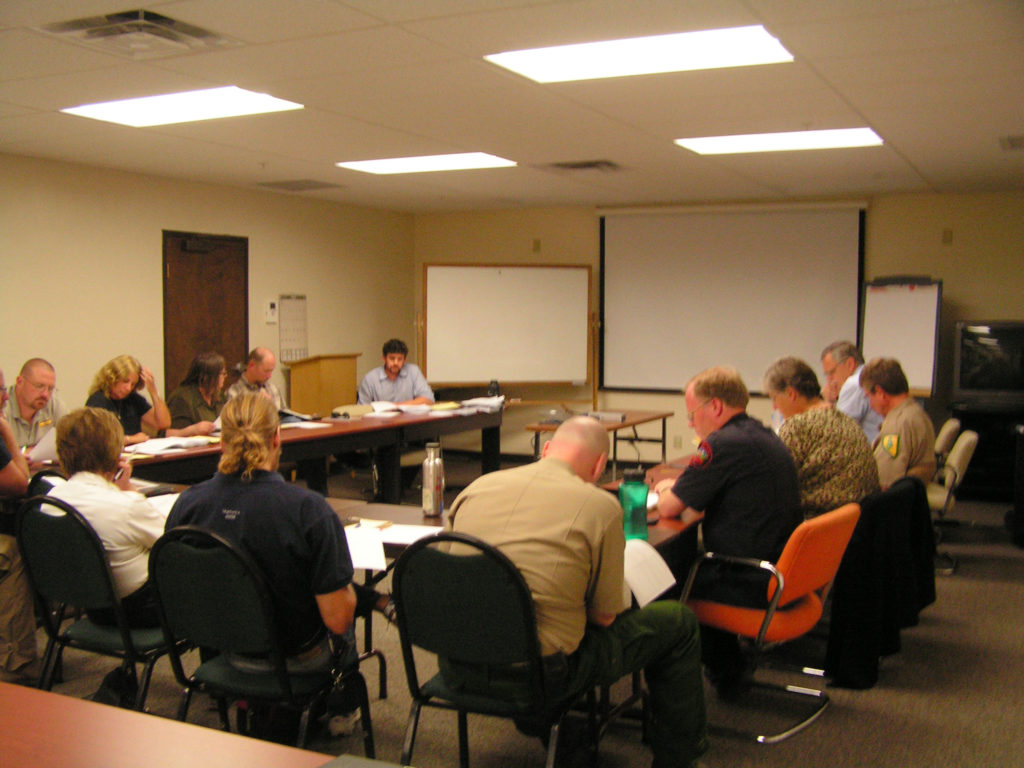The Network 4th Annual Conference Helps Communities to Prepare and Update a Community Wildfire Protection Plan
January 30th, 2018
Collaboration among residents, and local, state and federal firefighting agencies. Photograph courtesy of University of Nevada Cooperative Extension.
A few days ago I received a call from a rural Nevadan resident. He had recently moved to Nevada from Utah and had questions about creating a Community Wildfire Protection Plan (CWPP). Immediately, I knew these important and frequently asked questions could be answered at our Nevada Network of Fire Adapted Communities 4th Annual Conference. However, let’s first take a step back and define a CWPP and discuss the benefits of creating and updating this document.
For those who don’t know, a CWPP describes the wildfire hazards and outlines mitigation measures for a defined area or community. It allows the community to work collaboratively with government agencies in the process.
The benefits of a CWPP may include:
- Opportunity to increase community capacity by working together.
- Relationships are formed between communities, fire departments or other emergency responders and resource management agencies tasked with hazardous fuels reduction.
- Opportunity to establish a locally appropriate definition and boundary for the Wildland-Urban Interface.
- Fuels-reduction projects that are identified in a CWPP receive priority for funding and implementation by federal and state agencies.
- It may streamline federal planning process for fuels reduction work. For example, if a federal agency is planning a fuel-reduction project to implement a recommendation in a CWPP that lies within the interface and is located no farther than 1 ½ miles from the community boundary, the federal agency does not need to analyze other alternatives.
- The U.S. Forest Service and Bureau of Land Management are to spend not less than 50 percent of the funds allocated for hazardous fuel-reduction projects in the interface as defined in a CWPP.
Not only is it beneficial to have a CWPP, but an updated CWPP is also important because it keeps the community’s specific hazards current, involves the community’s stake holders in the planning process, and includes the updated conditions in the area such as overgrown vegetation or work that has already been completed in the community.
If you are interested in learning how to update or create a CWPP for your community join us at The Nevada Network of Fire Adapted Communities 4th Annual Conference where speakers will address this and how to utilize the CWPP template on the Living With Fire website. You can bet I’ll be there absorbing this important information!
The conference is Monday, March 12 from 8:00 am- 5:00 pm at the Atlantis Casino Resort Spa in Reno. Registration is free, but space is limited.
To register for the conference

Jamie Roice-Gomes is the outreach coordinator with University of Nevada Cooperative Extension’s Living with Fire Program. She earned her Bachelor of Science in Wildlife Ecology and Conservation and a Master of Arts in Interactive Environmental Journalism. She was a public relations assistant for Conrad Communications, a public information officer intern at the Nevada Department of Conservation & Natural Resources, and a Biological Science Technician at the USDA-Agriculture Research Service. She also enjoys volleyball, the Great Basin Desert, and spending time with family. Contact Jamie at 775-336-0261 or roicej@unce.unr.edu.
